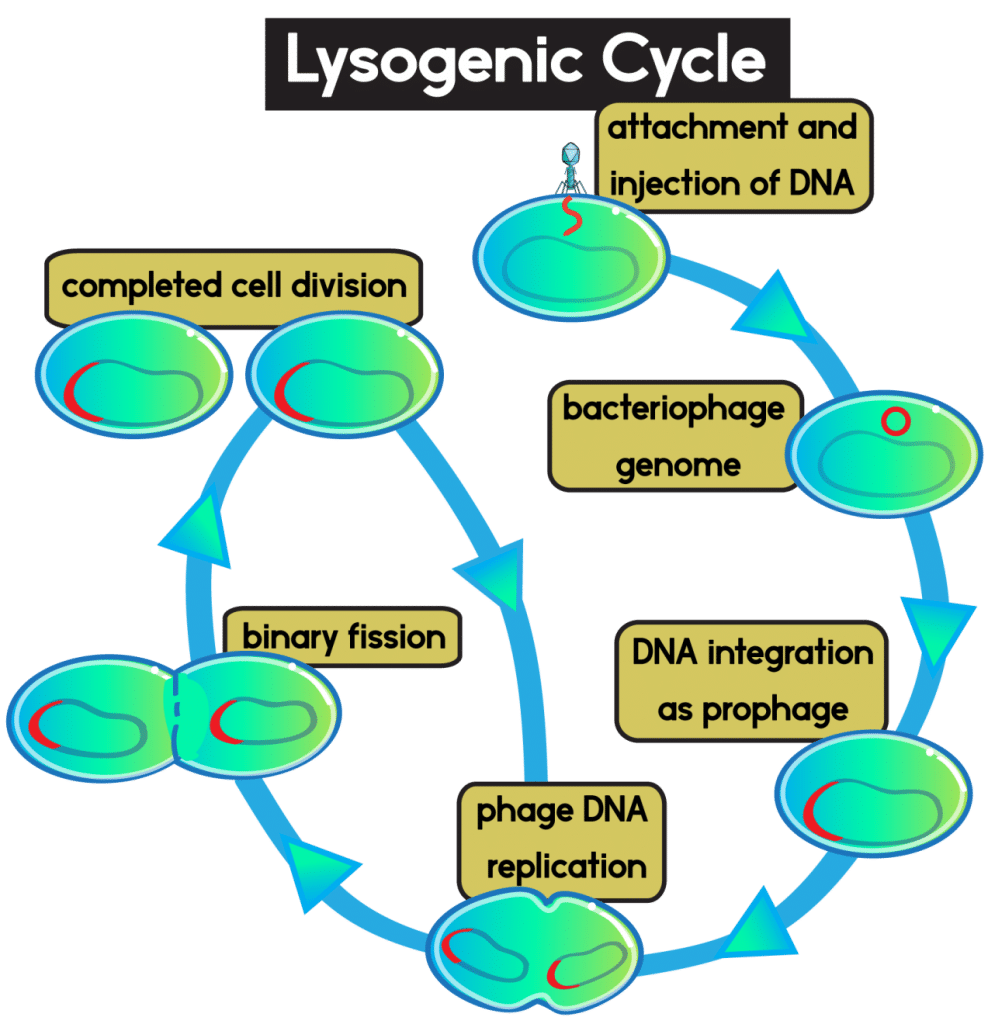Section 2: Viruses
 Viruses come in various shapes and sizes but are so small they can only be seen with an electron microscope. They are found everywhere, and no cell type is immune from their attack. A typical virus is composed of a core of either DNA or RNA, surrounded by a protein coat or capsid. Viruses are particles of nucleic acid, protein, and in some cases, lipids. They can only reproduce by infecting other living cells. When they infect a cell, they cause damage by making copies of themselves, which produces symptoms of a virus. Viruses are entirely dependent on living organisms for their survival. Bacteriophages are viruses that infect bacteria.
Viruses come in various shapes and sizes but are so small they can only be seen with an electron microscope. They are found everywhere, and no cell type is immune from their attack. A typical virus is composed of a core of either DNA or RNA, surrounded by a protein coat or capsid. Viruses are particles of nucleic acid, protein, and in some cases, lipids. They can only reproduce by infecting other living cells. When they infect a cell, they cause damage by making copies of themselves, which produces symptoms of a virus. Viruses are entirely dependent on living organisms for their survival. Bacteriophages are viruses that infect bacteria.

There are two patterns of viral infections called lytic infections and lysogenic infections. In a lytic infection, first, the bacteriophage proteins and nucleic acids assemble into complete virus particles. Then, the cell lyses release new bacteriophages that can now attach to other cells. Bacteriophage then injects DNA into the bacterium, and bacteriophage DNA forms a circle. Next, prophage can exit the bacterial chromosome and enter the lytic cycle. Finally, bacteriophage takes over and begins synthesizing new virus proteins and nucleic acids. In other words, a virus enters the cell, makes copies of itself, and causes the cell to burst or lyse, releasing hundreds of viruses.

In a lysogenic infection, first, the bacteriophage DNA forms a circle. Next, Bacteriophage DNA (prophage) inserts itself into a bacterial chromosome. Prophage is viral DNA embedded in the host’s cell during lysogenic infection. Radiation, heat, and chemicals can cause the prophase to become active. Then, the prophage replicates with a bacterium. In some cases, the cell and prophage are reproduced for many generations. In other words, a virus enters DNA into the DNA of a host cell, and the viral genetic information replicates along with the host’s DNA.
Most viruses contain RNA instead of DNA. RNA casts a wide net ranging from a common cold to cancer and even HIV. AIDS (acquired immune deficiency syndrome) is caused by an RNA virus called HIV (Human Pamplona Virus). This group of viruses is called retroviruses, which is a virus that contains RNA that produces a DNA copy of their RNA upon infecting a cell.
Even though viruses are not living, they do have many characteristics of living things.

Review:
- How do viruses reproduce?
- Compare a lytic infection to a lysogenic infection.
- What is a retrovirus?
